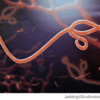Four Things HMGs Should Do To Prepare for Ebola
A Dallas-based hospitalist who works close to where the first diagnosed case of Ebola virus in the U.S. occurred says the arrival of the infectious disease in America should serve as a clarion call for preparedness.
Hospitalist Monal Shah, MD, FACP, physician advisor for Parkland Health & Hospital System in Dallas, says that HM groups looking to anticipate potential cases of Ebola in their region should:
- Make sure doctors know contact information for infection-prevention staffers and their local health department;
- Double-check that physicians know how to quickly get in contact with infectious-disease (ID) specialists
- Be aware of isolation procedures that will be necessary for this type of patient, including the use of standard, contact, and droplet precautions as well as others recommended by the Centers for Disease Control and Prevention; and
- Be diligent about asking patients about their recent travels when taking patient histories.
“For this particular disease, the travel is the big kicker,” says Dr. Shah, a member of Team Hospitalist. “The other symptoms are just so nonspecific. It’s vomiting, diarrhea, headaches, weakness…if we tried to admit everyone who had those types of symptoms, it wouldn’t make sense.”
Dr. Shah says that although he wasn’t involved, emergency-preparedness discussions at his institution about dealing with potential Ebola patients started a couple of months ago as spread of the disease in Africa became global news. But although the disease has been making headlines, HM groups are unlikely to make major changes to their care delivery processes, as even just changing the primary lead from a hospitalist to an ID physician could have unintended consequences, he adds.
“Who would cover at night?” Dr. Shah asks. “Who would be the first call at night? Would our nurses know that flow?
“There are a lot of potential downstream things that would need to be changed.”


